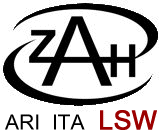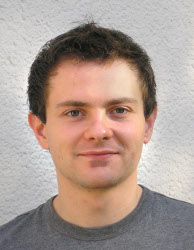Home >
The "Galactic halos" group
News
- Nov. 04, 2014: Congratulations to our PhD students Nikolay Kacharov and Benjamin Hendricks for each having won one of this year's Ernst-Patzer Prizes. This prestiguous award recognizes the best publications of young researchers amongst all of Heidelberg's six astronomical research institutes. This is a great and well-deserved honour to Nikolay and Benjamin (To see the award-winning papers, please click on their names).
- Oct. 14, 2014: Teaching for the Winter Term will begin. After last year's success, I will offer again the Bachelor/Masters/PhD-level lecture on Small Stellar Systems. Please drop by, Tuesdays, 11:15 in the seminar room (1st floor) at the Astronomisches Recheninstitut (Mönchhofstr. 12) if you are interested in binaries, globular clusters, dwarf galaxies (and much more).
- Jul. 25, 2014: Our ever-growing pool of observational data offers the opportunity for interesting student projects at the Bachelor and Master/Diploma level. Please see below for more details.
- Aug. 01, 2013: We proudly announce that Matthias Frank is awarded this year's PhD prize of the Astronomische Gesellschaft (AG) -- one of the most prestigious PhD awards of this kind. Matthias will give his Prize Lecture on `Clues on the nature and mass of ultra-compact dwarf galaxies' at the (annual meeting of the AG. See also this news release.
The formation and evolution of galaxies is a key area of contemporary astrophysics. Current theories and observations suggest that the halo of the Milky Way was built up over a considerably long time scale by the ingestion of disrupted, smaller fragments. But what characterizes those subgalactic objects? How and on what time scales were the components of galactic halos formed and enriched with chemical elements? What is the role of dark matter in their evolution?
Research overview
The Emmy Noether research group"Formation histories of galactic halos via chemical abundance analyses of near-by stellar systems"
has received five years funding by the Deutsche Forschungsgemeinschaft (DFG) to study in detail the formation histories of our Milky Way and its neighbour, the Andromeda galaxy (M31). We will chiefly achieve this by chemical abundance analyses of halo field stars, globular clusters, and dwarf galaxies. Data for these projects will be gathered, amongst others, from the ESO/VLT, Magellan, and Keck facilities.
Please see also this recent press release and this article about our newly funded Emmy Noether group.
Possible Diploma-, Master-, and PhD projectsIf you are interested, please contact me for futher enquiries, also regarding other project possibilities and Bachelor projects.
- Identifying Local Group equivalents in the near-by Universe (Bachelor)
- Carbon stars in dwarf galaxies (MSc/Dipl.)
- Characterization of a weird dwarf-galaxy merger (MSc/Dipl.)
- Chemical abundance measurements in metal poor globular cluster and bulge stars (MSc/Dipl.)
- Deep imaging of an ultrafaint dwarf galaxy (MSc/Dipl.)
Group members
Group members
|
Our group is also working closely with
Our group is also working closely with
- Sonderforschungsbereich 881 "The Milky Way System" (DFG collaborative research center)
- The Galactic Archaeology Group at LSW
- University of California Los Angeles (UCLA)
- The Carnegie Observatories, Pasadena
- Lund Observatory, Sweden
and involved in
and involved in
- The BRAVA Bulge Survey
- The 4MOST (4-m Multi-Object Spectroscopic Telescope) project
- The Gaia ESO Survey




